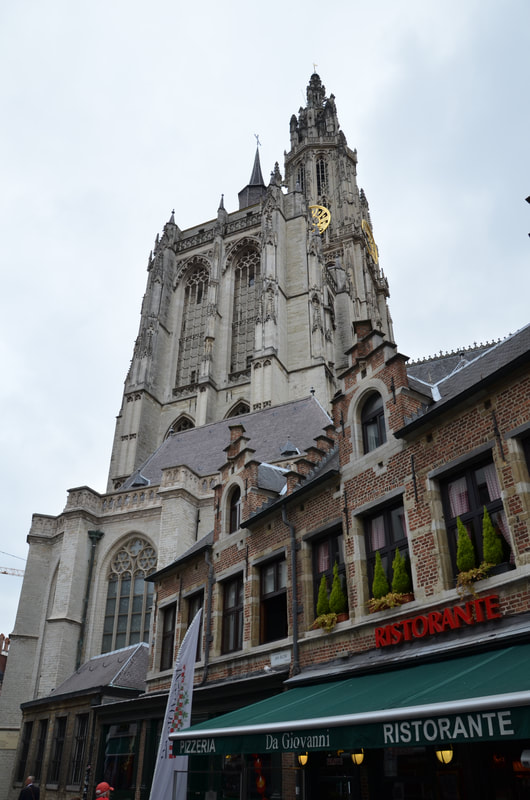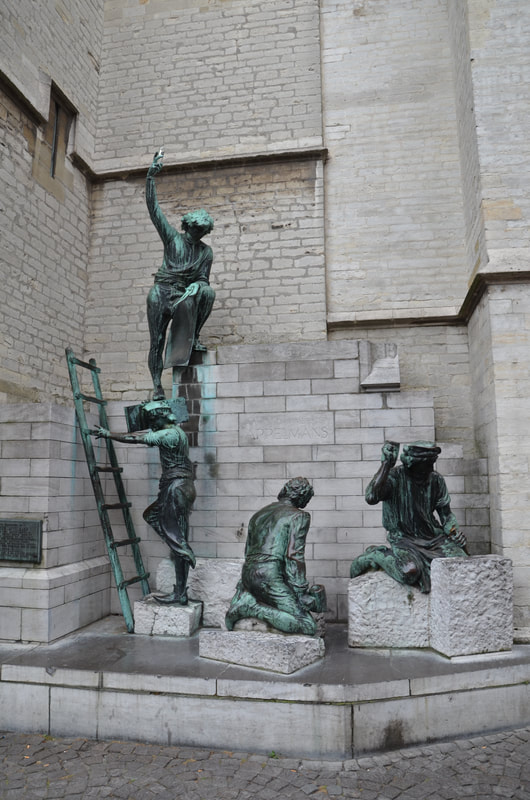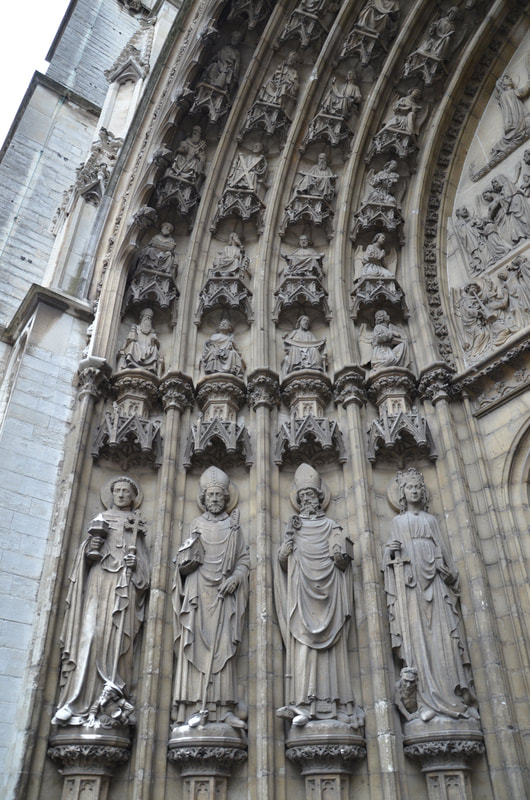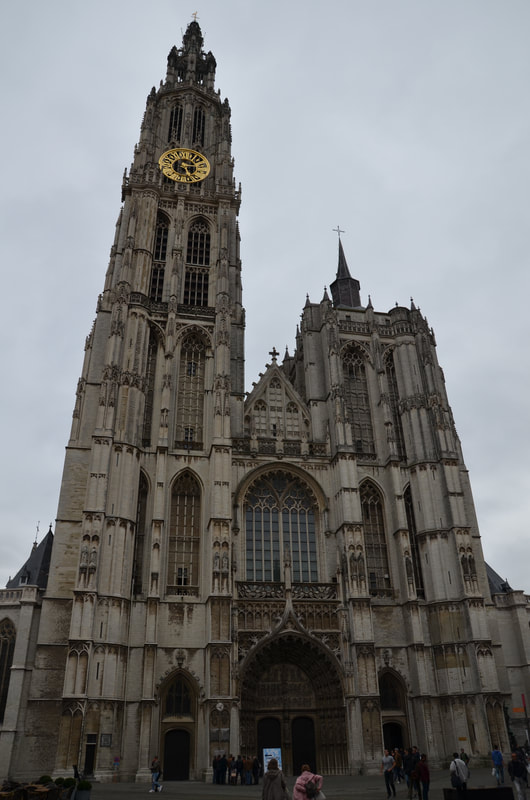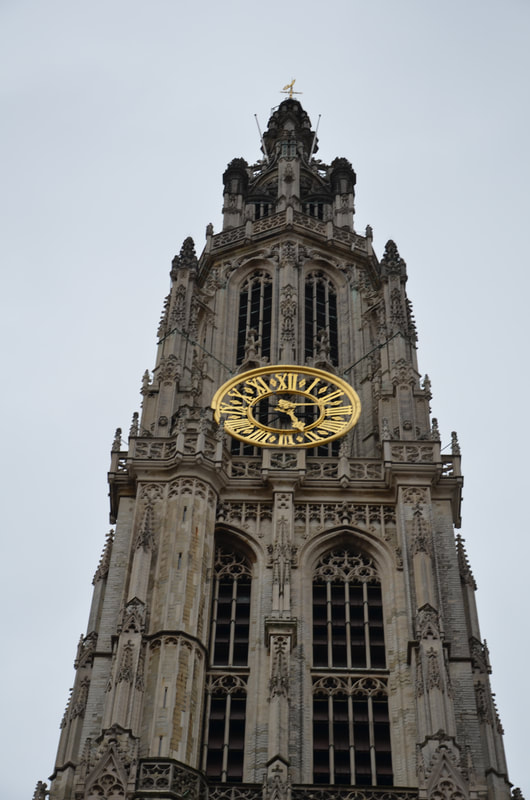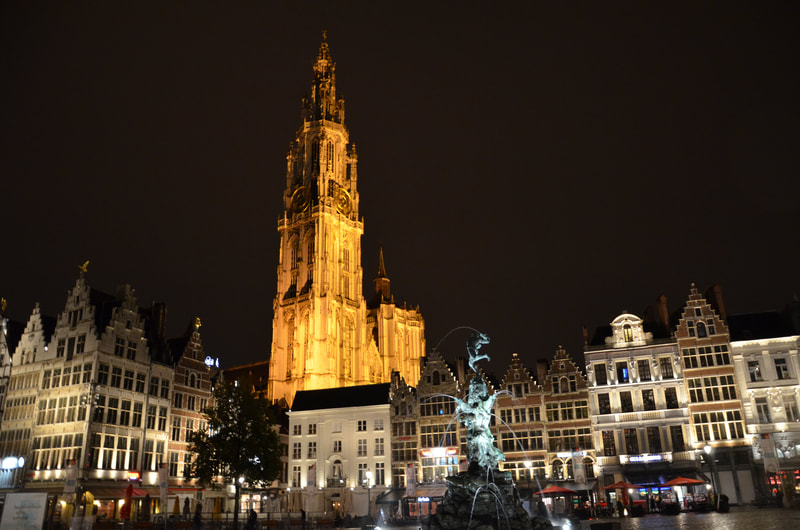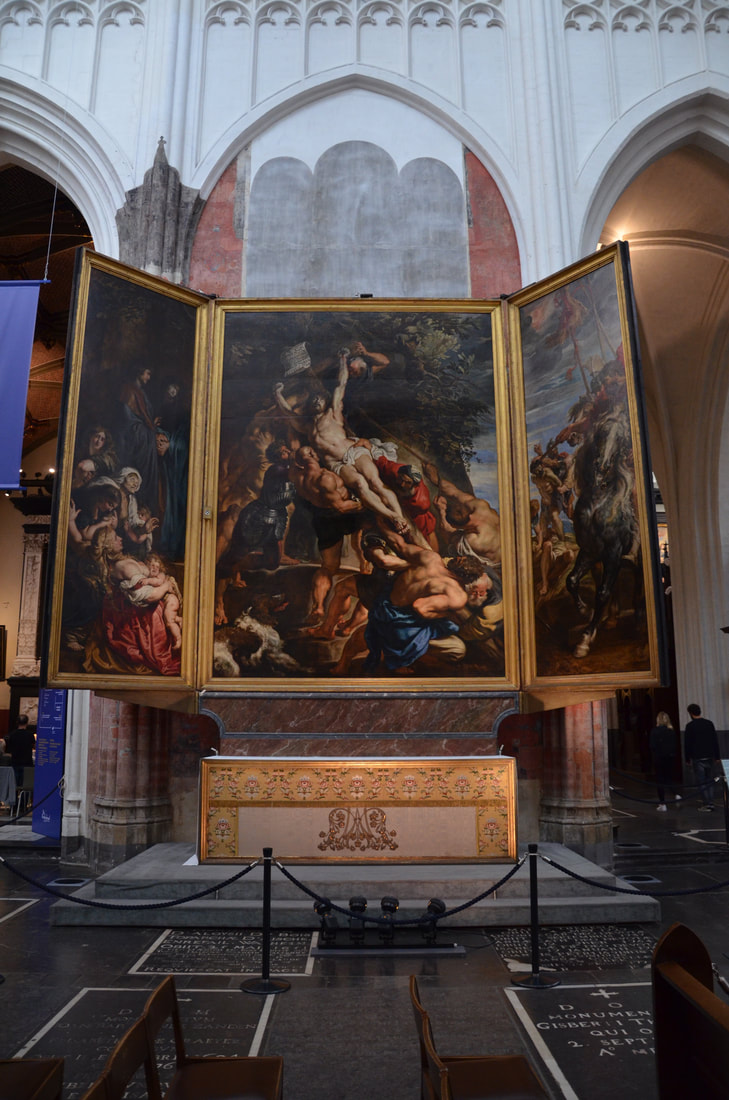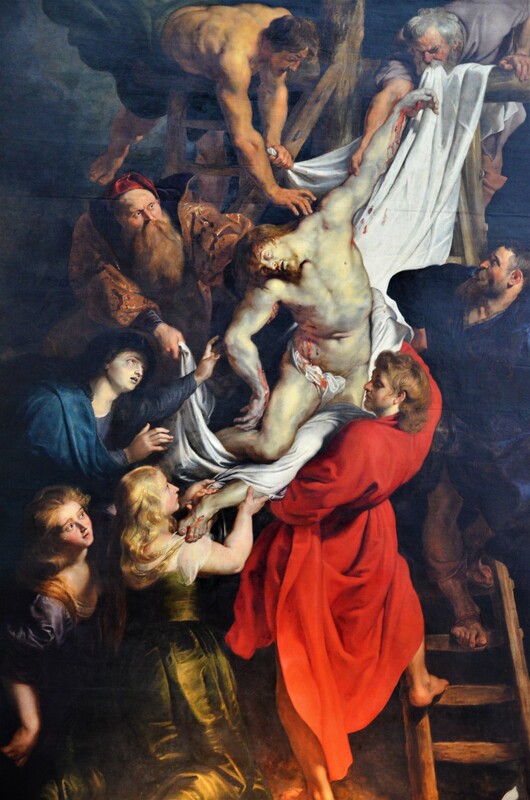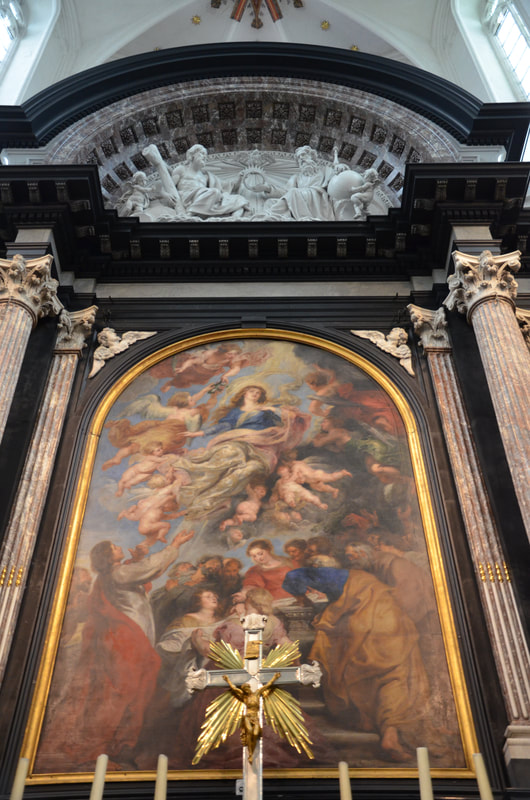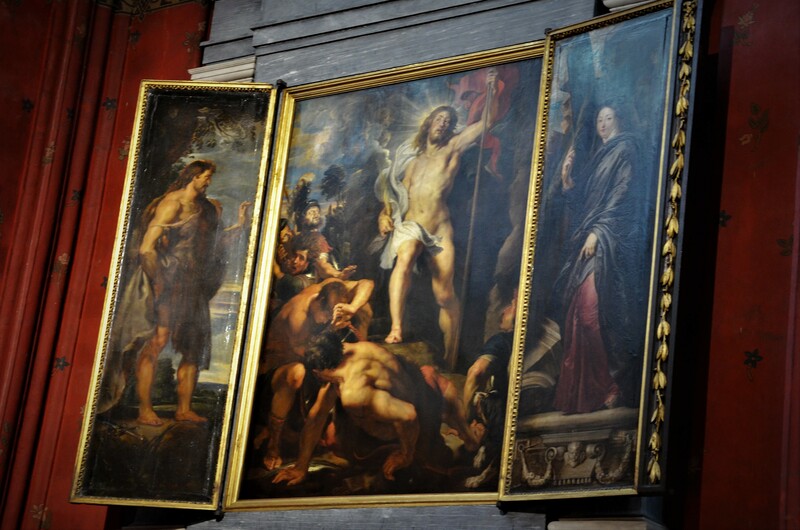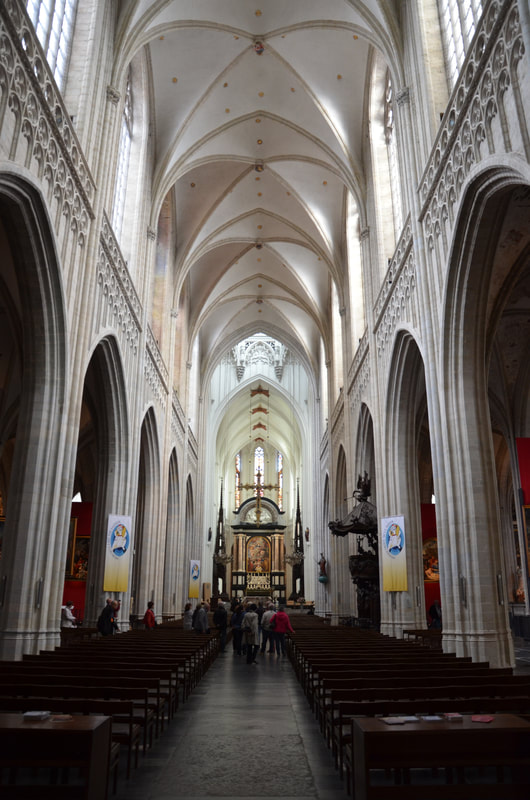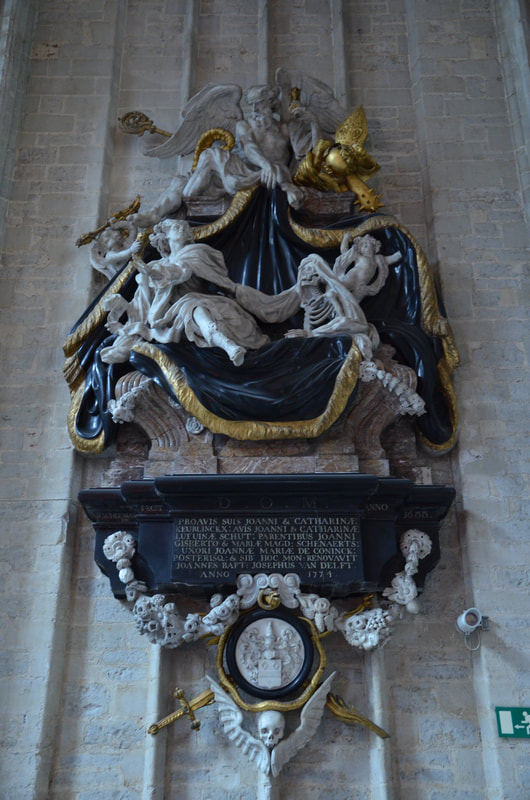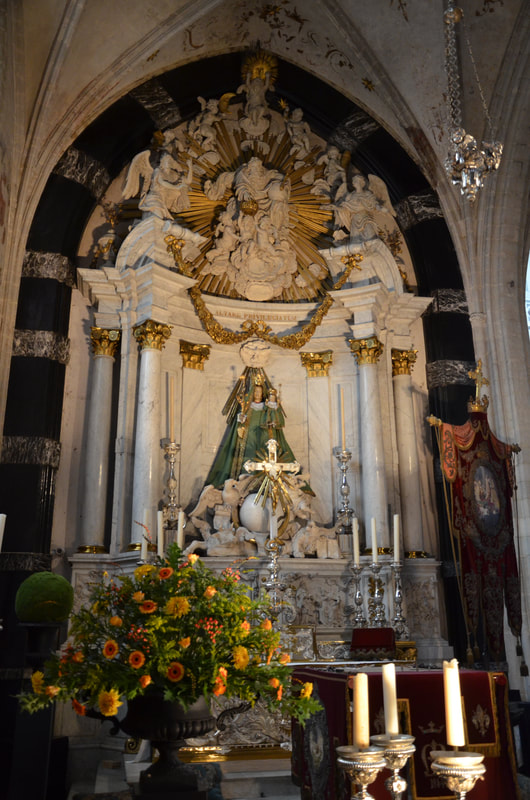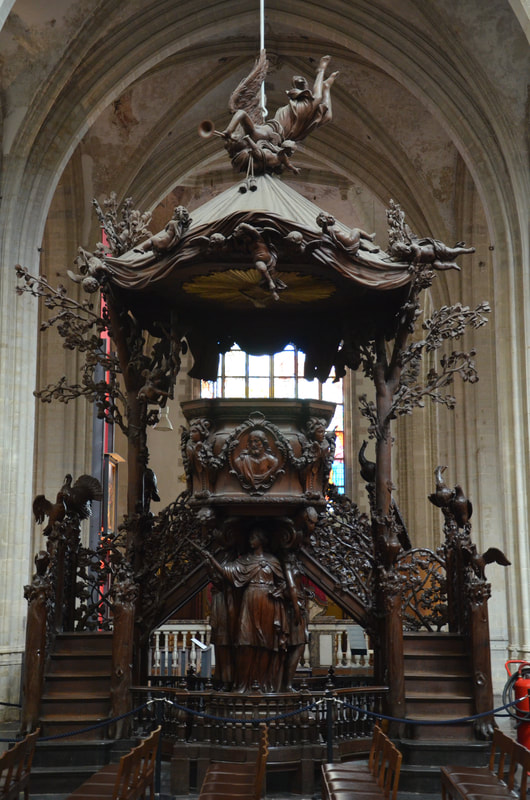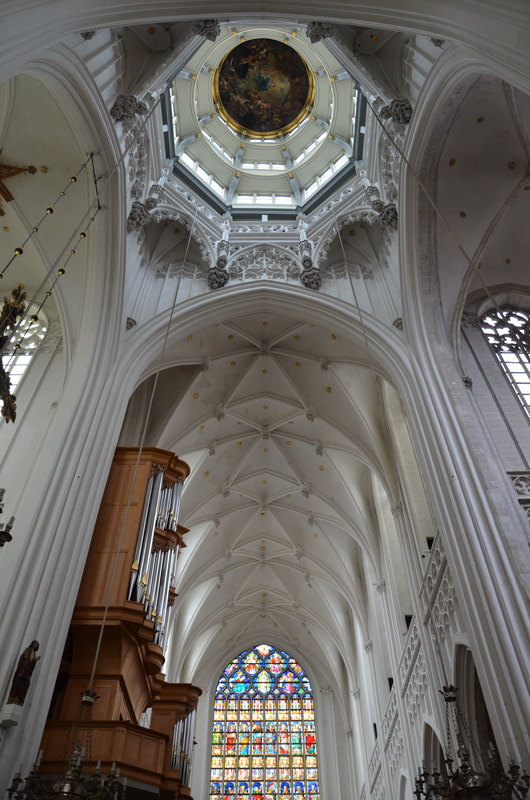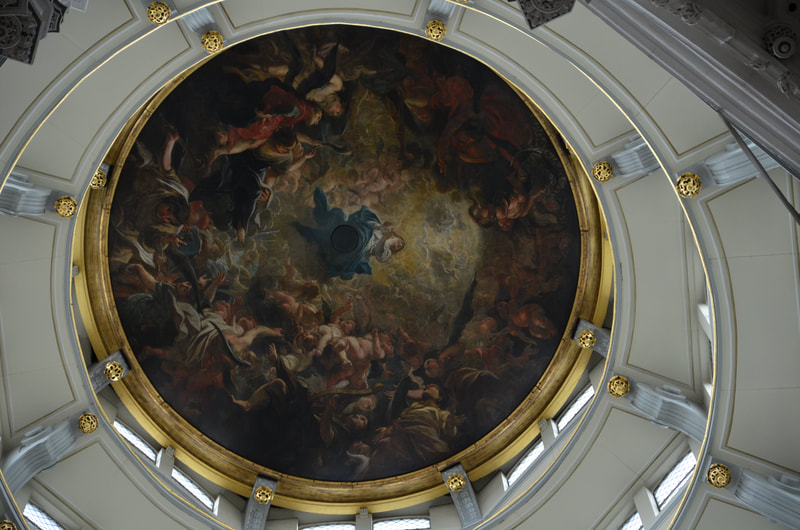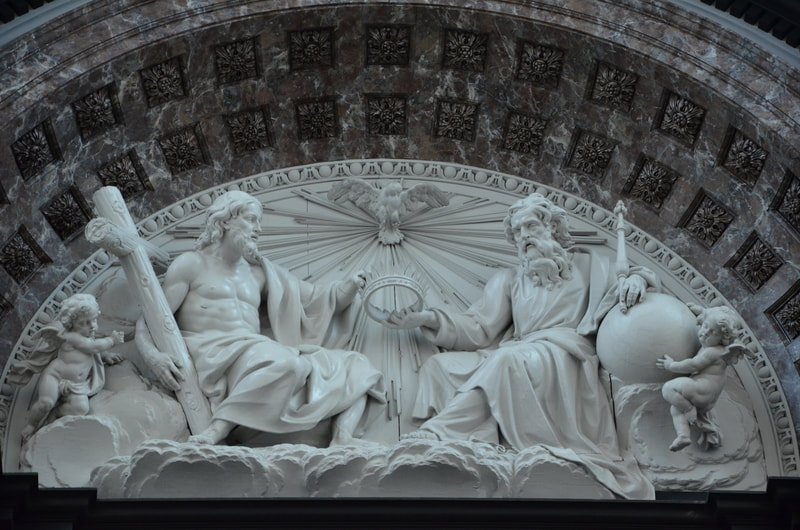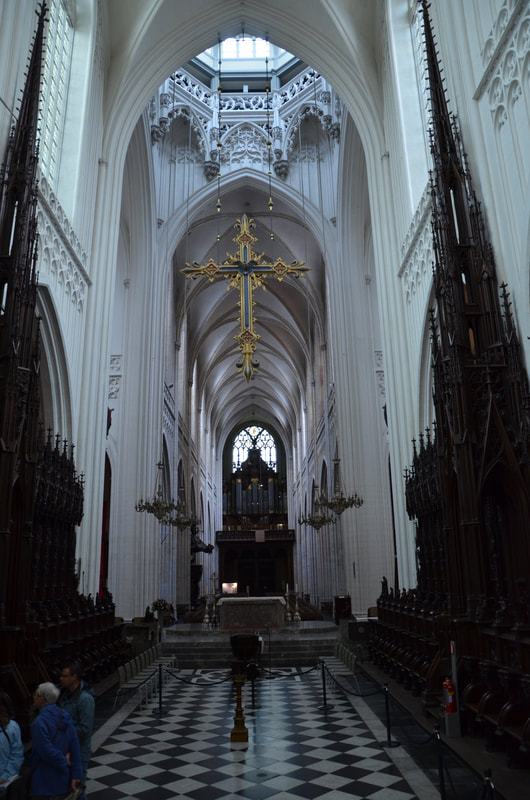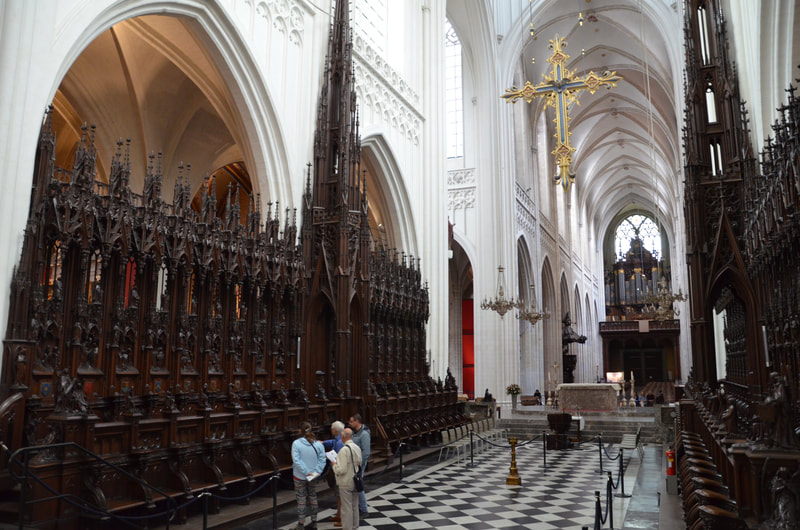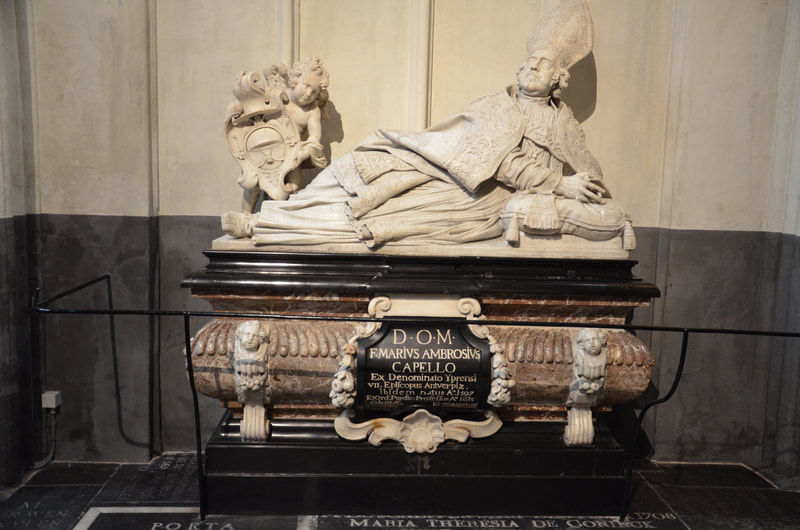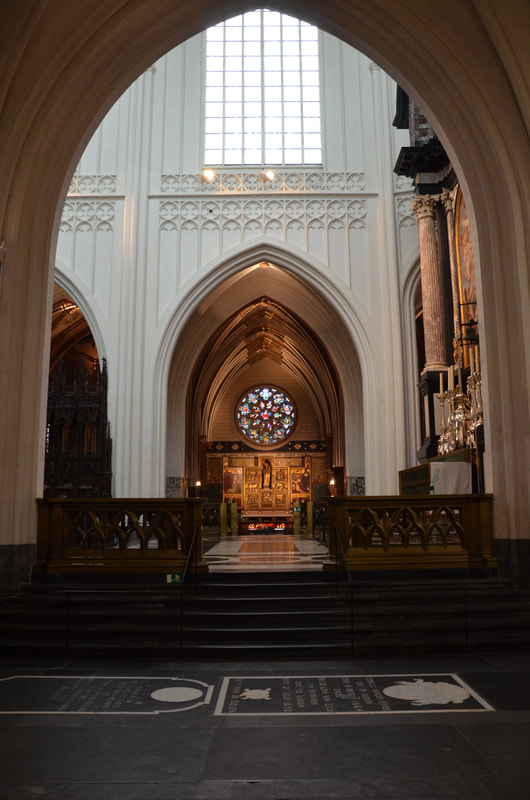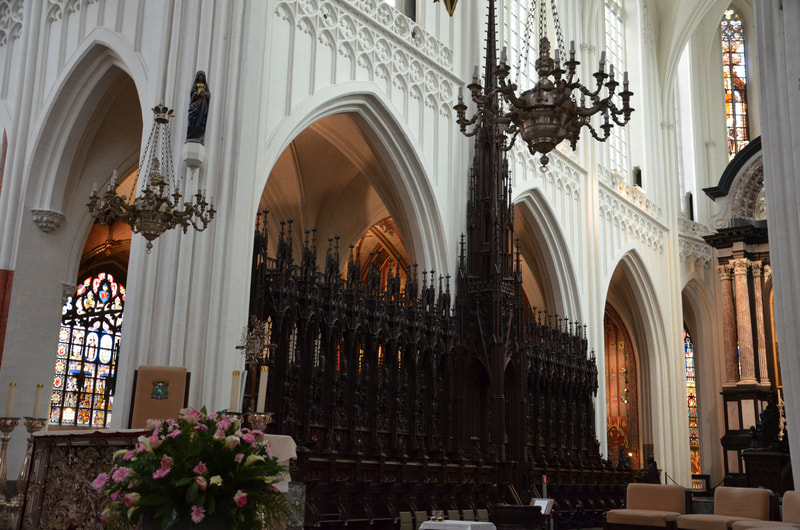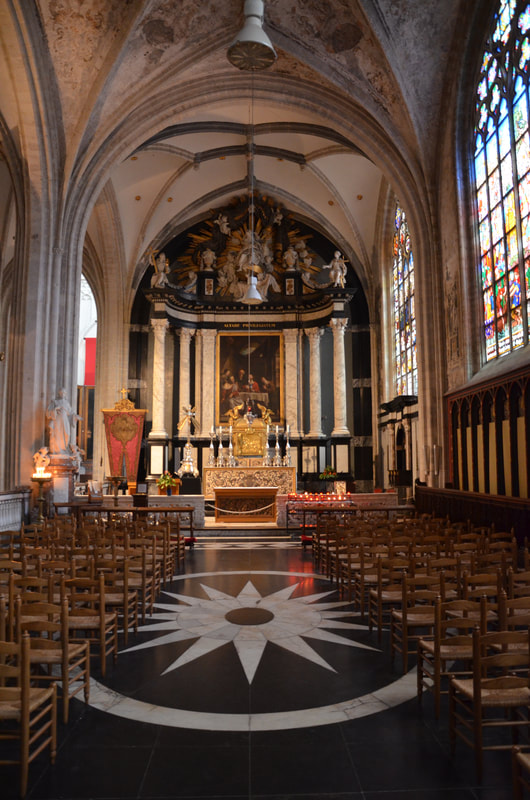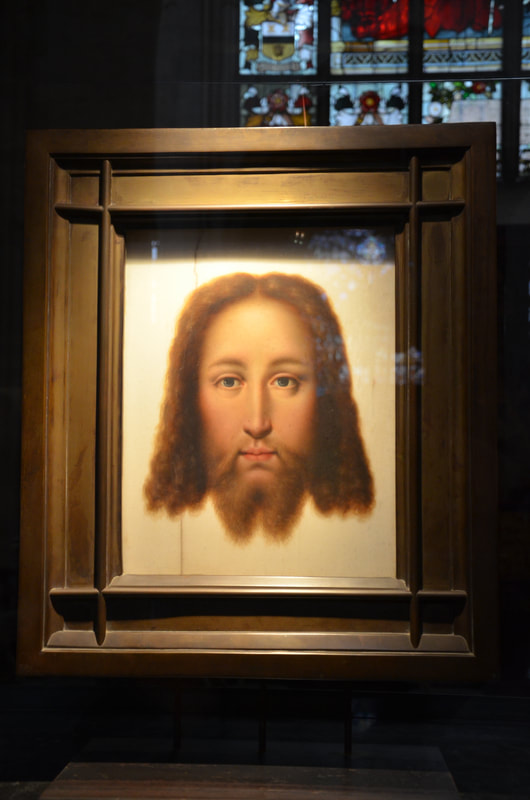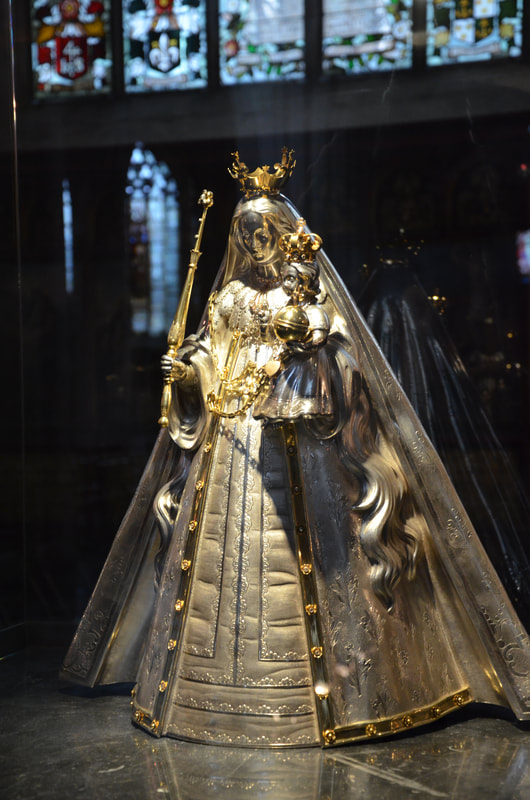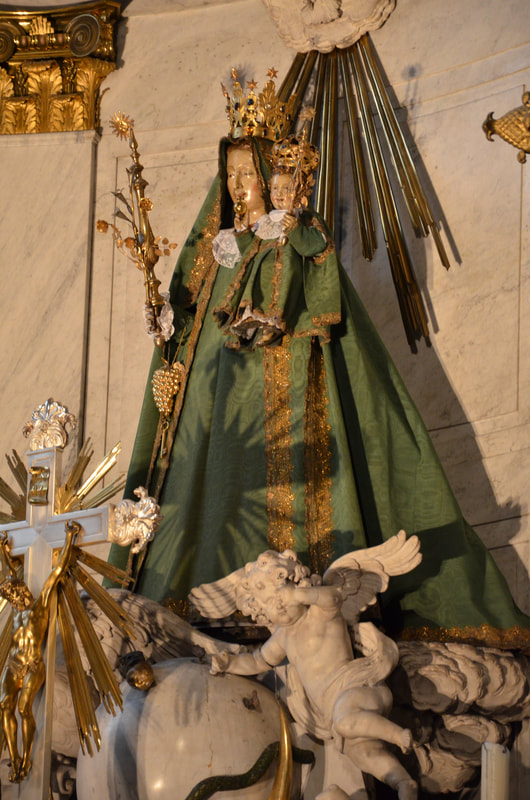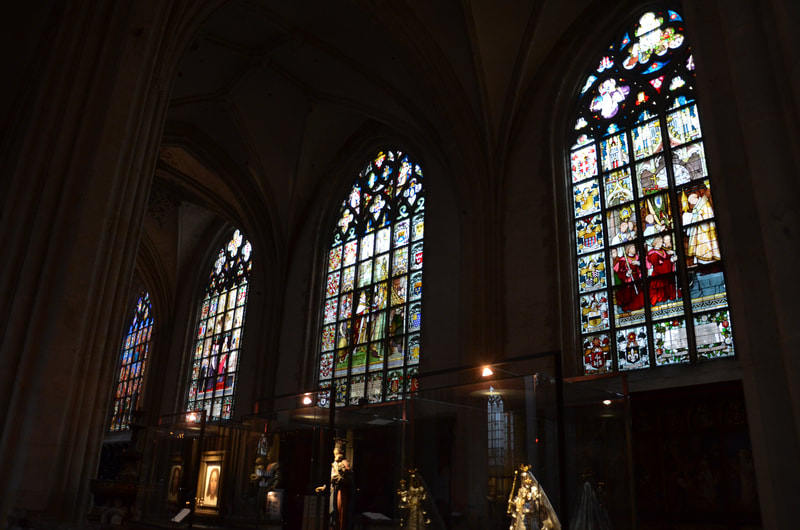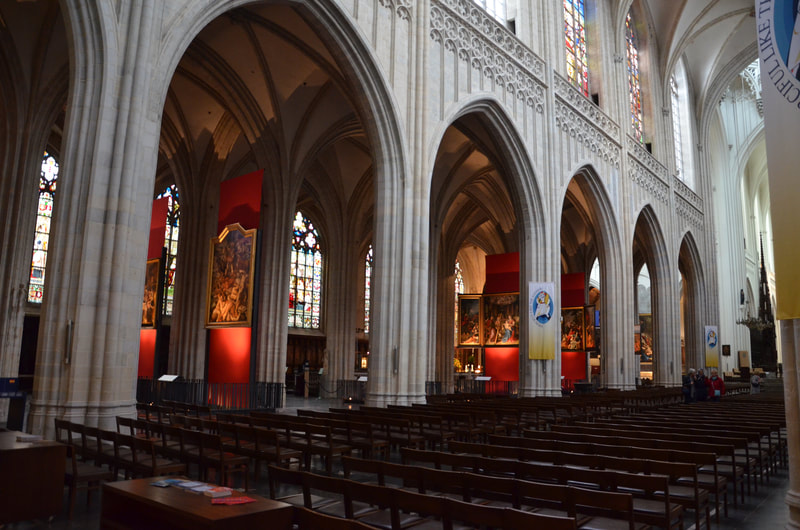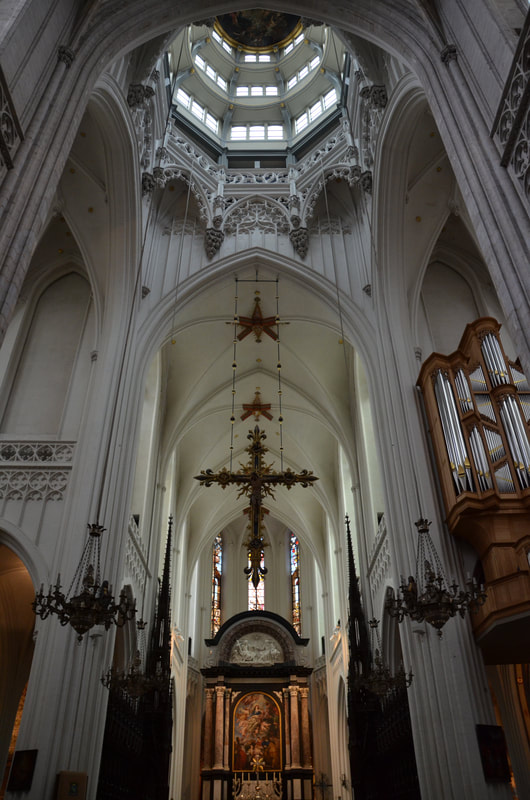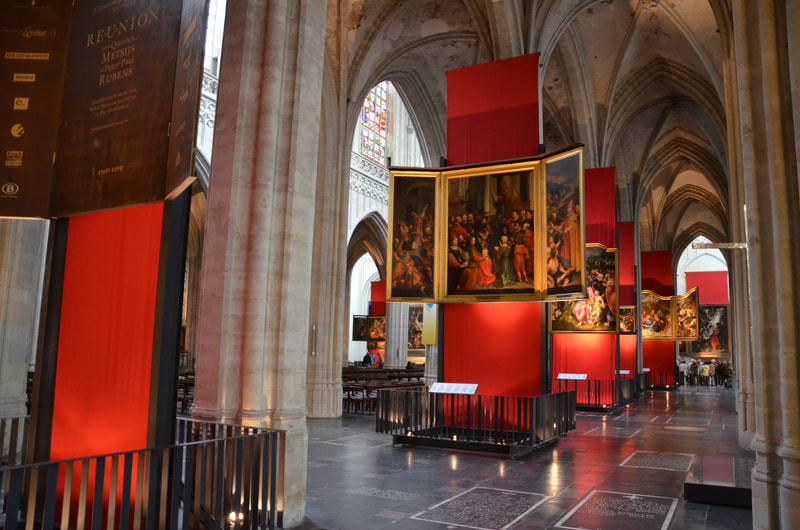Cathedral of the Virgin Mary (Onze Lieve Vrouwe Cathedral) |
vertical divider
is the largest Gothic building of its kind in Belgium (118 m long, 53,50 m wide, 40 m high). It was built in the years 1352-1521 and was never completed according to the original assumptions, as evidenced by one of the lower towers. This one of the most beautiful Gothic churches in Belgium was largely built by Jan and Peter Appelmans in the first half of the 15th century. Its 125-meter tower dominates the landscape of Antwerp.
|
The interior of the church is particularly impressive – 7 naves supported by 125 columns, 128 windows (55 stained glass), north and south towers, an octagonal lantern at the intersection of the nave and transepts, choir, ambulatory and 11 chapels – these numbers give an idea of how massive this building is. In the place where the cathedral stands today, there was a small chapel dedicated to the Blessed Virgin Mary, which became a parish church in 1124. In the 12th century, it was replaced by a larger Romanesque church. In its place, in 1352, construction began on the Cathedral of the Blessed Virgin Mary. The new church, which was to become the largest temple in the Netherlands, was to have two towers of equal height from the beginning. In 1521, after 170 years of construction, the cathedral was completed.
Works of Rubens - treasures of sacred art
W 1533 roku kościół został uszkodzony przez pożar. Cały wysiłek włożono w jego odbudowę i plany rozbudowy drugiej wieży, która osiągnęła tylko połowę swojej wysokości, zostały zarzucone. W roku 1559 kościół stał się główną świątynią biskupstwa Antwerpii i uzyskał tytuł katedry. Stracił go w latach 1801-1961, kiedy to biskupstwo zostało zlikwidowane.
Pożar z 1533 roku, atak ikonoklastów z roku 1566, a także fakt, iż w 1581 roku kościół przeszedł pod administrację protestantów, spowodowały, że nie przetrwał żaden element średniowiecznego wystroju świątyni.
Pożar z 1533 roku, atak ikonoklastów z roku 1566, a także fakt, iż w 1581 roku kościół przeszedł pod administrację protestantów, spowodowały, że nie przetrwał żaden element średniowiecznego wystroju świątyni.
W 1794 roku, podczas Rewolucji Francuskiej, kościół został ponownie splądrowany i zniszczony. Władze francuskie, w roku 1798, nosiły się z zamiarem wyburzenia tej wspaniałej budowli. Na szczęście okupacja nie trwała długo i już w 1816 roku zrabowane skarby zaczęły wracać do świątyni. Współczesne wnętrze to wystrój barokowy. W kościele zgromadzono niezliczoną ilość wspaniałych rzeźb i obrazów. Wszystkie one pozostają jednak w cieniu doskonałych prac Rubensa.
The interior of the Cathedral of the Blessed Virgin Mary impresses with a multitude of sacral artworks, headed by the paintings of Peter Paul Rubens. You can also admire beautiful stained glass windows, a monumental pulpit and magnificent stalls.
|
Piotr Paweł Rubens Podniesienie krzyża
The artist painted this magnificent work in the years 1609-1610. Until 1794 this huge painting (460 × 340 cm), side panels (460 × 150 cm), was part of the altar in the church of St. Walburga, which was demolished. The triptych was stolen by the French. Only after their defeat in 1815 was it returned to Antwerp. Since 1816 it has had a central place in the Cathedral of Our Lady.
The large size allowed Rubens to create a dynamic composition without any constraints. The resulting work is in the traditional Flemish style, but with elements of Baroque art. This was influenced by Rubens' eight-year stay in Italy. The central, very expressive panel shows nine men carrying the cross with Christ, in a diagonal position. The side panels complement the whole scene. On the left, at the top, stand Mary and the Apostle John. Mary's face shows neither suffering nor fear, but rather contemplation. The scene at the bottom of the left wing shows a woman feeding a small child. She seems terrified by the whole situation. When closed, the triptych shows the figures of four saints associated with the church of St. Walburga. On the left side stand St. Amand and St. Walburga, and on the right side are St. Catherine and St. Eligius. |
|
|
Piotr Paweł Rubens Zdjęcie z krzyża
Tryptyk namalowany przez Rubensa po powrocie z Włoch. Powstawał w latach 1611-1614. Jest to również jak w przypadku tryptyku Podniesienie krzyża monumentalne dzieło. Panel środkowy ma wymiary 421 × 311 cm, panele boczne 421 × 153 cm. Obraz charakteryzuje się nietypowym dla tego artysty spokojnym i wzruszającym realizmem, przejętym od Caravaggia.
W centrum obrazu widnieje oślepiająco białe, umęczone ciało Chrystusa, otoczone przez żałobników i postacie usiłujące je delikatnie zdjąć. Stopa Chrystusa spoczywa na ramieniu Marii Magdaleny, która wyciera ją włosami. Ciało Jezusa owijane jest w biały całun. Lewy panel przedstawia Marię oraz będącą w stanie błogosławionym Elżbietę, która urodzi Jana Chrzciciela. Obie kobiety są w obecności mężów Józefa i Zachariasza. Na prawym panelu Maria przekazuje w ręce arcykapłana Szymona małego Jezusa. Przed Szymonem klęczy Józef, trzymając w rękach dwa gołębie ofiarne. Tryptyk po zamknięciu po lewej stronie prezentuje legendę o św. Krzysztofie. Prawy panel przedstawia pustelnika, który wskazuje mu lampą drogę w ciemności. |
Tryptyk Rubensa Zmartwychwstanie powstawał w latach 1611-1612. Został przeznaczony do grobowca przyjaciela artysty, drukarza Jana Morteusa. Ukazuje on wyniosłego, triumfującego Chrystusa, niosącego czerwoną, łopocącą chorągiew. Chrystus powstał ze skalistego grobu. Takie przedstawienie grobu Jezusa było nowością, ponieważ do tej pory w sztuce panowała praktyka przedstawiania grobu Chrystusa jako sarkofagu. Na panelach bocznych Rubens sportretował św. Jana Chrzciciela oraz św. Martynę. Święty Jan stoi u brzegu Jordanu, leżący na ziemi miecz symbolizuje jego ścięcie. Święta trzyma w ręku gałązkę palmową jako znak jej męczeństwa. Na panelach zewnętrznych ukazane są piękne anioły. Stoją one zwrócone plecami do podwójnych drzwi, które wydają się otwarte. Czy to drzwi do wiecznego życia?.
Wniebowstąpienie Najświętszej Marii Panny to czwarty obraz Rubensa znajdujący się w kościele Najświętszej Marii Panny w Antwerpii. To imponujące olejne dzieło (490 × 325 cm) zdobi ołtarz główny. Jest ono poświęcone patronce kościoła. Obraz przedstawia unoszoną przez aniołki Maryję, której oczy zwrócone są wyczekująco ku niebu. U góry dwa anioły próbują ukoronować ją koroną z róż. Poniżej przy porzuconym grobie postaci dwunastu Apostołów i trzech kobiet, które były obecne przy śmierci Maryi.
Interior of the Cathedral of Our Lady
|
Address:
Cathedral Groenplaats 21, 2000 Antwerpen |
Opening hours:
monday-friday: 10.00-17.00 saturday: 10.00-15.00 sunday: 13.00-17.00 |
Ticket price:
12 Euro |
